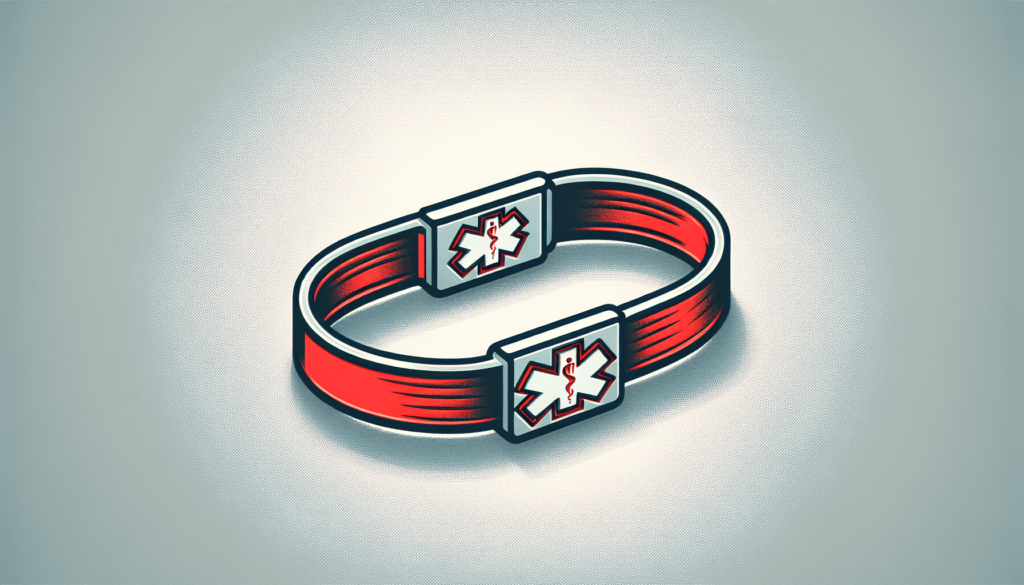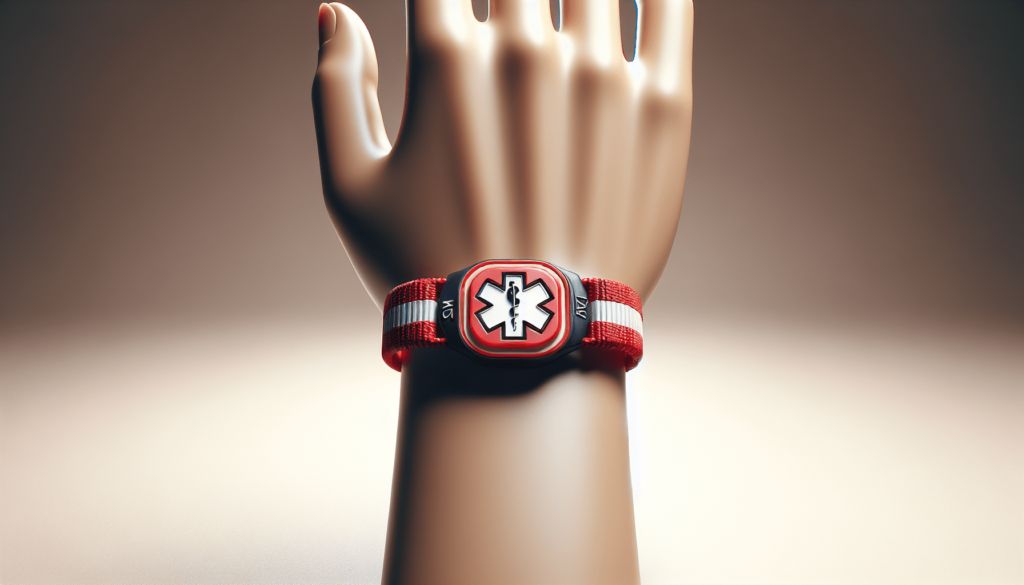Have you ever wondered what to do in case you or someone around you experiences a sudden and severe allergic reaction? Learning how to identify and manage anaphylaxis can be crucial in such situations, as it can be life-threatening and requires immediate attention.
Understanding Anaphylaxis
Anaphylaxis is a severe, potentially life-threatening allergic reaction that can occur rapidly. It’s crucial to recognize the signs and symptoms of anaphylaxis so that appropriate action can be taken swiftly. Anaphylaxis can occur within seconds or minutes of exposure to an allergen, such as foods, medications, or insect stings, and it requires fast intervention to minimize the risk of severe complications.
Common Triggers
The most common triggers for anaphylaxis include foods, medications, and insect stings. However, other allergens can also cause such reactions. Here is a breakdown of some frequent triggers:
| Category | Examples |
|---|---|
| Foods | Peanuts, tree nuts, shellfish, fish, milk, eggs, soy, wheat |
| Medications | Penicillin, aspirin, ibuprofen, chemotherapy drugs |
| Insect Stings | Bees, wasps, hornets, fire ants |
| Other | Latex, exercise-induced, preservatives in food or medications |
Being aware of these common triggers can help you identify potential situations where anaphylaxis may occur, allowing you to avoid them when possible.
How Anaphylaxis Occurs
Your immune system is designed to protect you from harmful substances, but sometimes it can overreact to substances that are not typically harmful—this is known as an allergic reaction. Anaphylaxis often involves an over-release of chemicals that can cause shock, presenting as a sudden drop in blood pressure and narrowing of the airways.
Symptoms to Monitor
Recognizing the symptoms of anaphylaxis is essential to providing timely help. These symptoms may include:
- Skin Reactions: Hives, itching, flushed or pale skin
- Respiratory Issues: Swelling of lips, tongue, throat, difficulty breathing, wheezing
- Gastrointestinal Symptoms: Nausea, vomiting, diarrhea, abdominal pain
- Cardiovascular Signs: Weak or rapid pulse, low blood pressure
- Neurological Symptoms: Feeling lightheaded, dizzy, loss of consciousness
These symptoms may vary from one person to another, and they can evolve rapidly. It’s vital to take any combination of these signs seriously.
Immediate Actions to Take
When you suspect anaphylaxis, time is of the essence. The faster you respond, the better the chances of preventing potentially severe health complications.
Use of Epinephrine
Epinephrine is the first line of treatment for anaphylaxis. This medication works by constricting blood vessels, which helps to increase blood pressure, and opening airways to facilitate breathing. If you or someone you are with has a prescription for an epinephrine auto-injector, here’s how you can use it:
- Locate the auto-injector: Make sure you know where the auto-injector is at all times.
- Remove the safety cap: Follow the instructions on the pen, which usually involves removing a safety cap.
- Inject into the thigh: Press the needle end firmly against the outer thigh at a right angle. Hold the injector in place for about 3 seconds, although some injectors may require a different amount of time.
- Call Emergency Services: It’s crucial to call for emergency medical assistance immediately after administering epinephrine, as further treatment may be necessary.
Position the Person Appropriately
While waiting for emergency services, help the person lie down and elevate their legs. This position can aid circulation and help prevent shock. If they’re experiencing vomiting or difficulty breathing, ensure their position allows them to breathe freely.
Secondary Measures
If symptoms do not improve after the first dose, a second injection may be needed. Some situations may necessitate the use of other medications, such as antihistamines or bronchodilators, but these should only be administered by medical professionals.

Long-term Management and Prevention
After an anaphylactic episode, understanding how to prevent future occurrences and what steps to take for management is essential.
Identification of Triggers
Work with a healthcare provider to identify potential allergens. This may involve allergy testing to pinpoint specific triggers. Once identified, you can establish strategies for avoiding these allergens and prepare for unexpected exposure.
An Action Plan
Developing a personalized anaphylaxis action plan can prepare you for emergencies. It typically includes instructions on recognizing symptoms, when and how to use epinephrine, and steps to take until medical assistance arrives. Sharing this plan with family, friends, and caregivers is also beneficial.
Regular Consultation
Regular check-ups with an allergy specialist can help you stay informed about your condition. They can provide insights into new therapies and offer guidance on adjusting your management plan as needed.
Education and Advocacy
Educate those around you about your allergies and how they can offer assistance during an emergency. Advocacy can make environments like schools or workplaces safer for those with severe allergies.
Dispelling Myths and Misconceptions
Despite an increase in awareness over the years, several myths about anaphylaxis persist. Understanding the facts can empower you to handle situations more effectively.
Myth 1: “Small Amounts of Allergen Won’t Trigger a Reaction”
It’s incorrect to assume that only significant exposure causes anaphylaxis. Even trace amounts of an allergen can lead to a significant reaction in susceptible individuals.
Myth 2: “Allergic Reactions Always Start Slowly”
Anaphylaxis can develop rapidly, within minutes of exposure. Relying on gradual symptom development might delay crucial treatment, leading to severe outcomes.
Myth 3: “Epinephrine is Dangerous and Should Only Be Used as a Last Resort”
Epinephrine is safe when used correctly. The risks of not administering it during an anaphylactic reaction far outweigh any potential side effects of the medication.
Myth 4: “You Only Need One Dose of Epinephrine”
While one dose is often sufficient, some cases might require additional doses. It’s vital to monitor the person closely and follow professional medical advice.

Building Awareness and Support Networks
Support from loved ones, healthcare professionals, and awareness groups can significantly impact how anaphylaxis is managed. It’s about creating a community that understands and advocates for safety.
Joining Support Groups
Connecting with others who experience anaphylaxis can be incredibly supportive. These groups are excellent for sharing experiences, advice, and emotional support. They can also be resources for staying abreast of the latest developments in allergy management.
Advocacy for Safer Environments
You can work with local or national advocacy groups to promote policies and practices that help create safer environments. This might involve advocating for better food labeling practicesor increased availability of life-saving medications in public spaces.
Education and Training Programs
Participating in or facilitating educational seminars and training on anaphylaxis can increase awareness. Teach colleagues, teachers, and community members how to recognize and manage anaphylactic reactions. Awareness simplifies response measures and contributes to saving lives.
Conclusion
Recognizing and treating anaphylaxis requires awareness, preparedness, and quick action. Understanding triggers, symptoms, and the importance of immediate intervention with epinephrine is crucial in managing this life-threatening condition. Long-term management, dispelling misconceptions, and building awareness all contribute to enhancing safety and quality of life for individuals at risk of anaphylaxis. By fostering a support network and advocating for safer practices, you can help create a more welcoming environment for everyone impacted by severe allergies.
